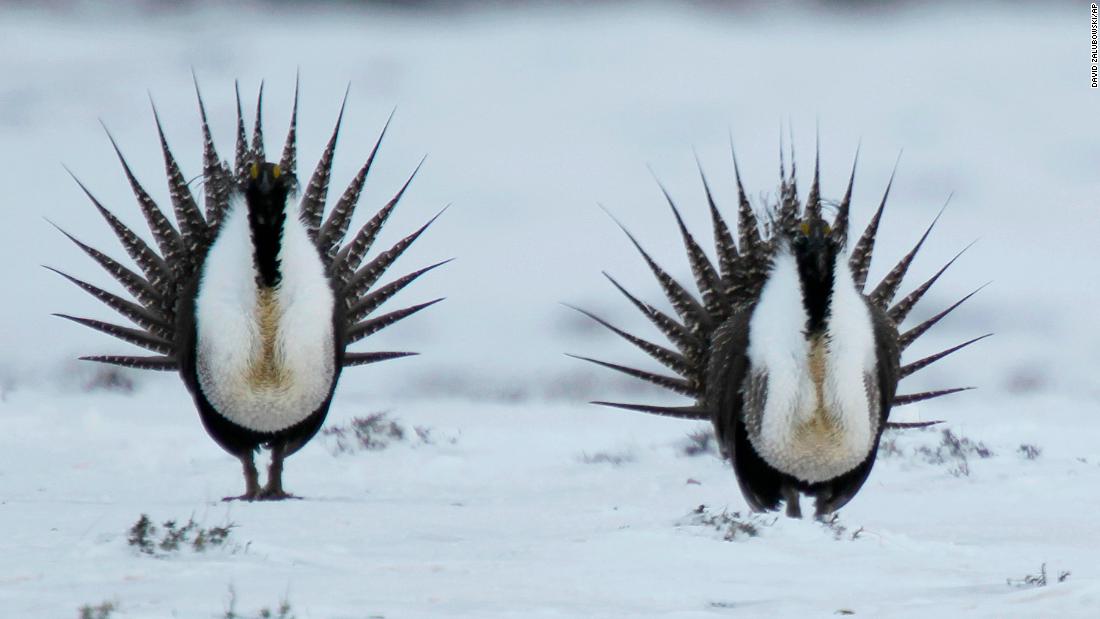
The Interior Department has been working on changing sage grouse protections since June 2017, when former Secretary Ryan Zinke signed an order asking federal and state governments to strengthen "communication and collaboration... with the shared goal of conserving" sage grouse while also not impeding "local economic opportunities," according to the Bureau of Land Management.
The effort looked at changing land use guidelines across the West that had been put in place under the Obama administration in 2015 to protect the bird's habitat.
Under Zinke, Interior asked 11 states whether they thought changes should be made to the 2015 plans, and seven said they thought there should be changes, according to BLM. The department's task force recommended that sage grouse not be protected under the Endangered Species Act and suggested changing land use guidelines in the states that indicated they thought there should be changes to the plans.
The states impacted by Interior's new sage grouse plan are Oregon, Colorado, Idaho, Utah, Wyoming, Nevada and northeastern parts of California.
House Committee on Natural Resources Chairman Rep. Raul Grijalva, an Arizona Democrat, called the changes a "smash-and-grab job on our environment," in a statement.
"As part of its ongoing campaign to hand over public lands to fossil fuel companies, this administration is rolling back sage grouse protections that many stakeholders created together through a long and deliberative process," Grijalva said. "It seems clear that Acting Secretary David Bernhardt's clients stand to gain more than anyone else from this revision."
Interior Department officials countered by saying that the new policy demonstrates how state and federal government can work together to protect the wild bird and not hinder economic development.
"Since the very beginning of this effort, all partners have maintained the need to conserve the sage grouse and avoid the need to list the species as threatened or endangered," said Brian Steed, BLM Deputy Director for Policy and Programs, in a statement. "We also share a commitment to conservation that does not put the West's communities at risk and which balances between regulation and access."
Bernhardt is a former fossil fuel lobbyist. A CNN investigation found that Bernhardt's former client, the Independent Petroleum Association of America, repeatedly met and emailed Interior officials about the sage grouse bird.
In July and August 2017, IPAA lobbyist Samantha McDonald emailed an Interior staffer about the agency issuing new guidance on maps related to sage grouse and the staffer responded that Interior was "working on it," according to emails obtained by the Western Values Project.
Public calendars show Bernhardt attended at least three staff meetings related to the sage grouse, at least one of which included staffers who communicated with IPAA on the issue or met with the group's representatives.
In a March 2018 letter, IPAA and other groups specifically thanked Bernhardt for Interior's regulation rollbacks and said they looked forward to working with the agency on revising sage grouse land-use policies.
A spokesperson for Bernhardt said in a statement that he has fully complied with his recusal agreements, and some advocates for the energy industry argue that such regulatory rollbacks are part of what Trump was elected to do.
Western Values Project Deputy Director Jayson O'Neill said the Trump administration "broke their deal with the West" by adopting these changes.
"The changes were rigged from the outset at the behest of the same special interests and oil and gas groups that Bernhardt represented as a lobbyist, while ignoring the concerns of former Western governors and the over a half a million voices that asked them to honor the original deal," O'Neill said in a statement.
Bagikan Berita Ini














0 Response to "Trump opens sage grouse habitat to oil and gas drilling"
Post a Comment